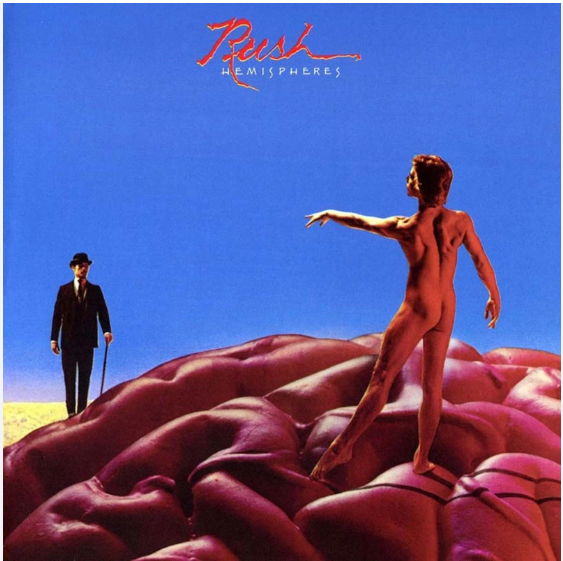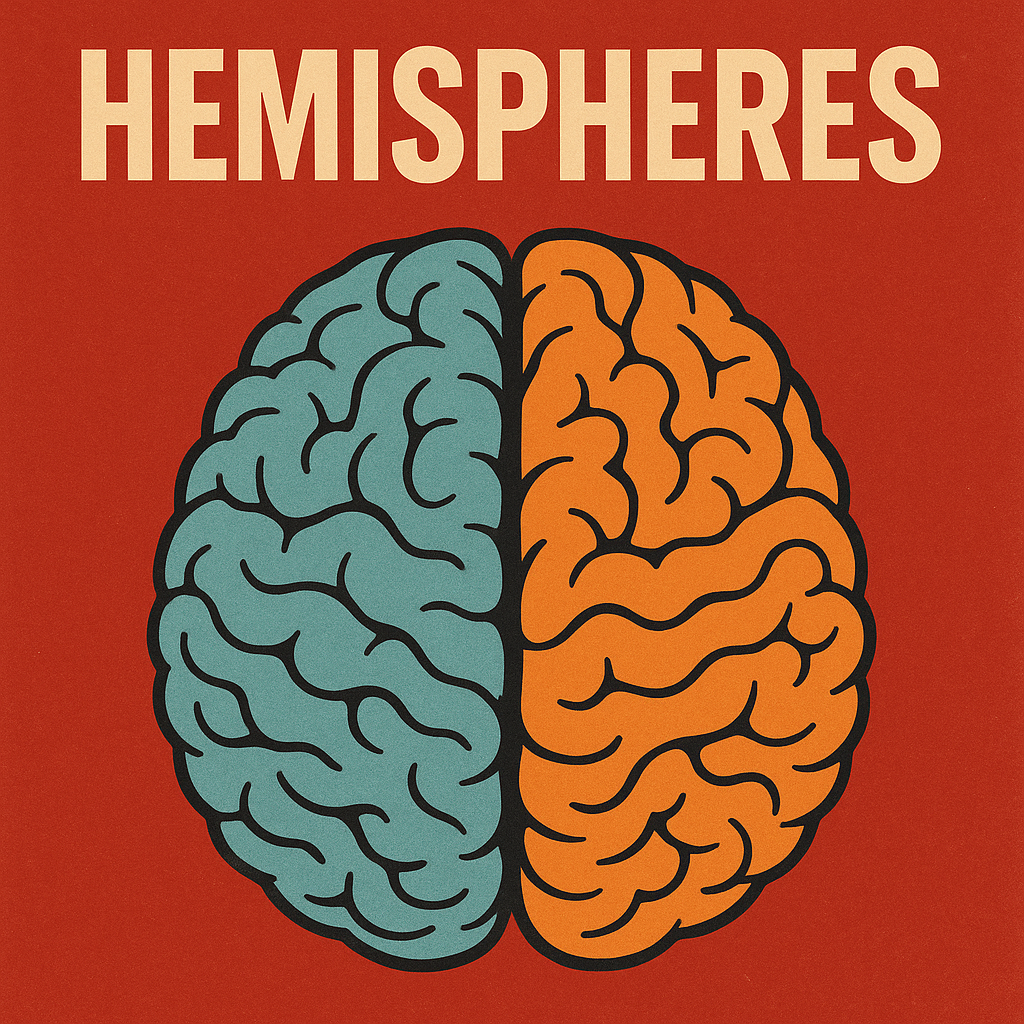A Single Perfect Sphere: What Rush Teaches About America’s Divide
In 1978, Rush released Hemispheres, a prog-epic about the split between logic (Apollo) and passion (Dionysus). It ends not with conquest but with balance.
 Note: Neil Peart, the drummer of Rush, was the band's primary lyric writer. So when we refer to Rush's lyrics, we really mean Rush's—and Neil Peart's—lyrics.
Note: Neil Peart, the drummer of Rush, was the band's primary lyric writer. So when we refer to Rush's lyrics, we really mean Rush's—and Neil Peart's—lyrics.
I. From Rush to Politics
Rush's Hemispheres turns a simplified left–right brain metaphor into a myth about how people, and societies, split themselves. That myth maps eerily well onto America’s political moment. One “hemisphere” prizes procedures, systems, and technocratic reason; the other elevates passion, identity, and unvarnished speech. Each insists the other is the problem—and, in so doing, each forgets what it needs from the other.
II. Apollo and Dionysus — Logic vs. Passion
In the album’s story, Apollo offers order, clarity, and structure; Dionysus offers freedom, fervor, and belonging. Both are partial truths. Likewise in our public square: an illiberal left can harden into system-first control, while an authoritarian right can harden into power-first emotion. Push either to an extreme and you don’t get flourishing—you get fracture.
Key Risk: When analysis loses empathy, it becomes cold control; when expression loses grounding, it becomes rage without remedy. Democracies need both heart and mind to work in concert.
III. The Traveler Returns — Cygnus as Balance
Peart doesn’t resolve the conflict by having one god yield. Instead, the Traveler from Cygnus X‑1—having flown the Rocinante to the edge—reappears and is declared Cygnus, the God of Balance. The point is profound: reconciliation rarely arises from either side winning; it requires a new principle that can hold tension without tearing.
Translated to politics, our way through polarization is not the triumph of one hemisphere over the other, but the rise of a civic ethic that binds analysis to empathy, liberty to sensibility, freedom of expression to responsibility for truth.
IV. Toward Reconciliation — “A Single Perfect Sphere”
Rush’s closing lyric points to a posture we can practice:
We can walk our road together
If our goals are all the same
We can run alone and free
If we pursue a different aim
Let the truth of love be lighted
Let the love of truth shine clear
Sensibility, armed with sense and liberty
With the heart and mind united in a single perfect sphere
Read through a contemporary lens, this isn’t a call to conformity; it’s a call to integration. Shared goals where we have them. Freedom where we diverge. Truth guided by love—and love anchored in truth. Sensibility that wields both reason and liberty. That’s the work of balance.

V. What Balance Could Look Like in Practice
| Principle | Left Hemisphere Strength | Right Hemisphere Strength | Balanced Application |
|---|---|---|---|
| Truth & Speech | Fact-finding, standards, and expertise | Plain speech, cultural intuition | Free speech with a shared duty to be accurate and fair |
| Policy & People | Systems thinking, safeguards | Human impact, common-sense checks | Design for outcomes and dignity; measure, then iterate |
| Institutions | Rule of law, process integrity | Accountability, course corrections | Independent institutions that can still be reformed when they fail |
| Pluralism | Coalitions, compromise | Identity, local voice | National aims with room for local variation; disagreement without dehumanization |
VI. Coda — The Civic Work Before Us
The hemispheres metaphor is, of course, simplified—both brains and polities are messier. But it reminds us of something essential: reason and passion are complements. America doesn’t need one hemisphere to dominate. It needs, as Rush’s story insists, a single (imperfect) sphere—heart and mind working as one.